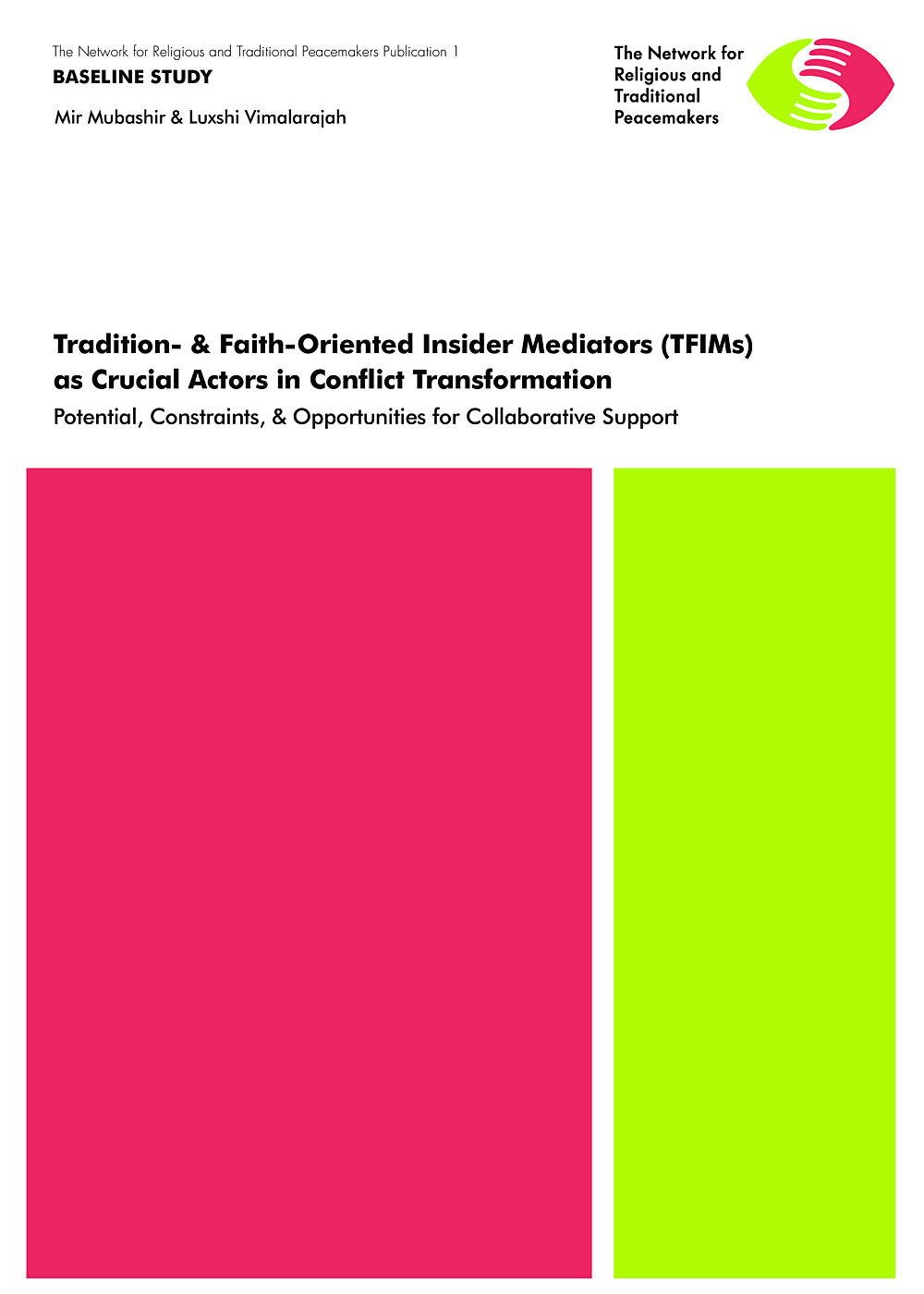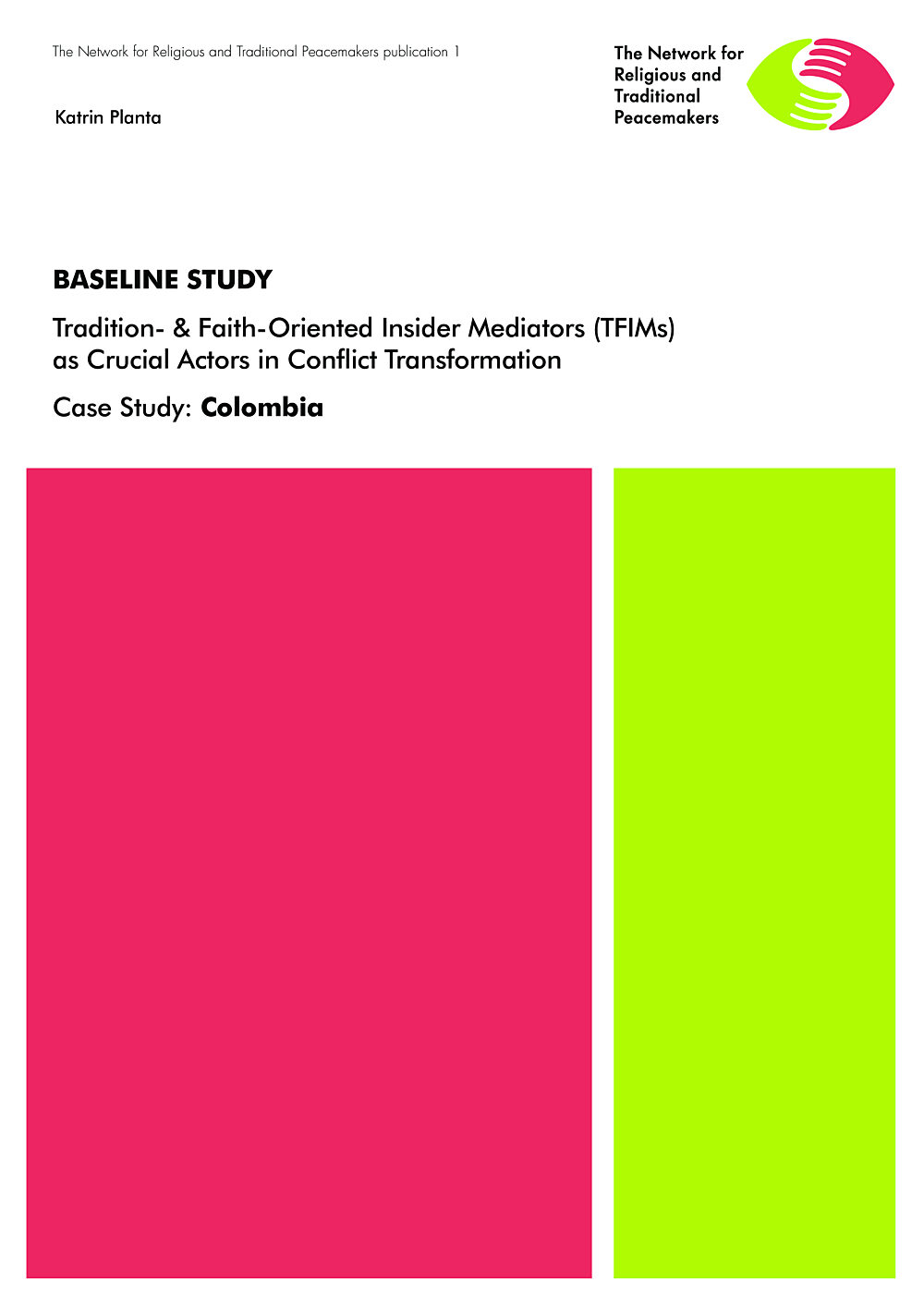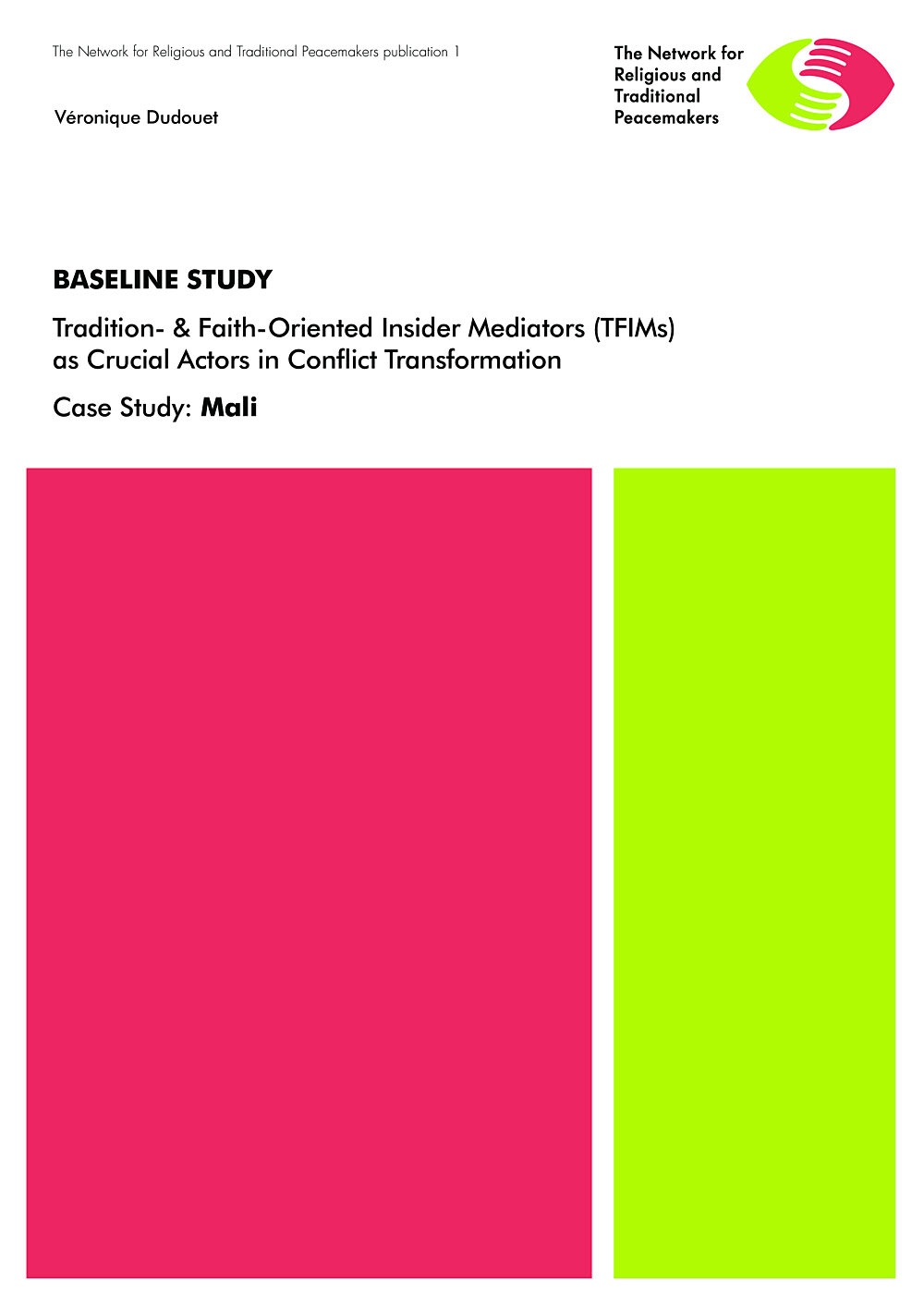Our Library
Explore our publications, from research papers and series to educational materials, covering all aspects of conflict transformation and peace promotion.

الوسطاء الداخلي َّ ون الموجهون إلى التقليد والمعتقد في تحويل النزاعاتاإلمكانيات والقيود والفرص للدعم التعاوني
[ترجمة آلية الملخص]
تم إعداد هذه الدراسة حول الوسطاء الداخليين ذوي التوجهات الدينية والتقاليد (TFIMs) باستخدام المعرفة الموجودة حول الوسطاء المطلعين وبناء السلام المحلي الموجه نحو التقاليد والعقيدة ، والبيانات الأصلية التي تم الحصول عليها من خلال الدراسات الميدانية.
- Year2016
- Author(s)Mir Mubashir, Luxshi Vimalarajah

Challenges and Opportunities for Female Combatants’ Post-War Community LeadershipLessons Learnt from Aceh and Mindanao (Workshop Report)
This report synthesises lessons learnt on the challenges and opportunities for female combatants’ transition into post-war community leadership in the Philippines and in Aceh (Indonesia) based on a peer-advice workshop convened in Cotabato City, Philippines, in April 2016, with funding from the Robert Bosch Foundation. The workshop brought together former female members of the Free Aceh Movement (GAM) of Aceh (Indonesia) and current members of the Bangsamoro Women’s Auxiliary Brigade (BIWAB) of the Moro Islamic Liberation Front (MILF) in Mindanao (Philippines). The report offers key policy recommendations and support options for national and international peacebuilding and development agencies, particularly in contexts of asymmetric conflict between a state and one or more non-state armed groups.
- Year2016
- Author(s)Stina Lundström, Shadia Marhaban

Tradition- & Faith-Oriented Insider Mediators (TFIMs) as Crucial Actors in Conflict TransformationPotential, Constraints, & Opportunities for Collaborative Support (Baseline Study)
This study on tradition- and faith- oriented insider mediators (TFIMs) has been produced using both existing knowledge on insider mediators and tradition- and faith-oriented local peacebuilding, and original data acquired through field studies.
- Year2016
- Author(s)Mir Mubashir, Luxshi Vimalarajah

Tradition- & Faith-Oriented Insider Mediators (TFIMs) as Crucial Actors in Conflict TransformationCase Study: Colombia
This case study on tradition- and faith- oriented insider mediators (TFIMs) in Colombia has been produced using both existing knowledge on insider mediators and tradition- and faith-oriented local peacebuilding, and original data acquired through field studies.
- Year2016
- Author(s)Katrin Planta

Tradition- & Faith-Oriented Insider Mediators (TFIMs) as Crucial Actors in Conflict TransformationCase Study: Southern Thailand
This case study on tradition- and faith- oriented insider mediators (TFIMs) in Southern Thailand has been produced using both existing knowledge on insider mediators and tradition- and faith-oriented local peacebuilding, and original data acquired through field studies.
- Year2016
- Author(s)Jularat Damrongviteetham

SIPRI Yearbook 2016Armaments, Disarmaments and Internatinal Security (Kurzfassung Deutsch)
Das SIPRI Yearbook 2016 stellt Originaldaten aus den Bereichen globale Militärausgaben, internationale Rüstungstransfers, Rüstungsproduktion, Atomstreitkräfte, bewaffnete Konflikte und multilaterale Friedenseinsätze zusammen und liefert neueste Analysen zu wichtigen Aspekten der Rüstungskontrolle, des Friedens und der internationalen Sicherheit. Das SIPRI-Jahrbuch ist erstmals 1969 erschienen. Es wird gemeinsam von Forschern von SIPRI und eingeladenen, externen Fachleuten verfasst. Diese Broschüre fasst die Inhalte des SIPRI Yearbook 2016 zusammen und enthält eine Auswahl an Daten und Informationen daraus.
- Year2016
- Author(s)Stockholm International Peace Research Institute (SIPRI), Friedrich Ebert Stiftung, Berghof Foundation

Tradition- & Faith-Oriented Insider Mediators (TFIMs) as Crucial Actors in Conflict TransformationCase Study: Myanmar/Burma
This case study on tradition- and faith- oriented insider mediators (TFIMs) in Myanmar/Burma has been produced using both existing knowledge on insider mediators and tradition- and faith-oriented local peacebuilding, and original data acquired through field studies.
- Year2016
- Author(s)Mir Mubashir

Tradition- & Faith-Oriented Insider Mediators (TFIMs) as Crucial Actors in Conflict TransformationCase Study: Mali
This case study on tradition- and faith- oriented insider mediators (TFIMs) in Mali has been produced using both existing knowledge on insider mediators and tradition- and faith-oriented local peacebuilding, and original data acquired through field studies.
- Year2016
- Author(s)Véronique Dudouet

Tradition- & Faith-Oriented Insider Mediators (TFIMs) as Crucial Actors in Conflict TransformationCase Study: Lebanon
This case study on tradition- and faith- oriented insider mediators (TFIMs) in Lebanon has been produced using both existing knowledge on insider mediators and tradition- and faith-oriented local peacebuilding, and original data acquired through field studies.
- Year2016
- Author(s)Malika Bouziane

Tradition- & Faith-Oriented Insider Mediators (TFIMs) as Crucial Actors in Conflict TransformationCase Study: Kenya
This case study on tradition- and faith- oriented insider mediators (TFIMs) in Kenya has been produced using both existing knowledge on insider mediators and tradition- and faith-oriented local peacebuilding, and original data acquired through field studies.
- Year2016
- Author(s)Mir Mubashir